Main navigation
Review books by our faculty
Un Momento by Luis Muñoz
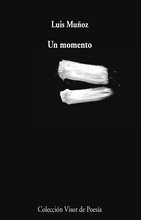
Luis Muñoz (Granada, 1966) es autor de los libros de poemas Septiembre (1991), Manzanas amarillas (1995), El apetito (1998), Correspondencias (2001) —recogidos en Limpiar pescado. Poesía reunida (2005)—, Querido silencio (2008), Vecindad (2018) y Guadarrama —en diálogo con guaches de Montse Lago— (2023). Actualmente es profesor en la Universidad de Iowa. Su poesía, que ha obtenido, entre otros, los premios Ojo Crítico, Generación del 27 y Ciudad de Córdoba, se debate —en palabras de Araceli Iravedra— en tensión continua entre la radiografía del instante y la afirmación de su flujo. Un momento, dividido en tres secciones introducidas por sendas perspectivas de Antonio Machado, indaga a través de la energía de sus imágenes —a modo de instantáneas o composiciones visuales—, en la esencia del amor como sorpresa y cambio, en el testimonio de los otros como inquietantes modelos de vida y en la feroz innovación del yo sumergido en un tiempo que es, a la vez, escurridizo y perenne.
Guadarrama by Luis Muñoz
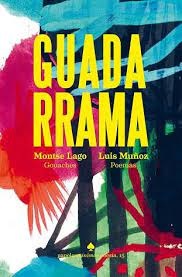
En un espacio tan connotado por la poesía y la pintura españolas como la Sierra de Guadarrama, Luis Muñoz y Montse Lago ofrecen con esta exploración paralela y entrelazada, un set de observaciones verbales y plásticas que confrontan, sin búsquedas predeterminadas, la naturaleza única de los provocadores encuentros que se despliegan mientras caminan.
Goya o el misterio de la lectura by Luis Martín-Estudillo
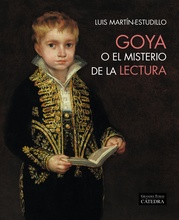
Francisco de Goya vivió de cerca formidables transformaciones sociales. Entre ellas, el revolucionario incremento del número de lectores y textos disponibles, fenómeno que tuvo un impacto profundo en el mundo del artista y su visión del mismo. Su obra ofrece una sostenida reflexión sobre la lectura, un ejercicio no exento de misterio cuyas implicaciones exploró en numerosos óleos, estampas y dibujos. Leer resulta en ellos una actividad ambigua, que puede llevar al conocimiento o al éxtasis, a la realización personal o a la autodestrucción, a la santidad o a la perdición. Al mismo tiempo, Goya se sirve de la lectura para generar posibilidades adicionales de interpretación sobre sus propias creaciones. Este libro desvela por vez primera las claves históricas, intelectuales y artísticas de un aspecto fundamental de su producción.
Goya and the Mystery of Reading by Luis Martín-Estudillo
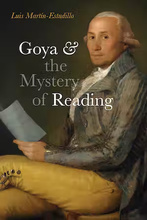
Spanish artist Francisco de Goya (1746–1828) lived through an era of profound societal change. One of the transformations that he engaged passionately was the unprecedented growth both in the number of readers and in the quantity and diversity of texts available. He documented and questioned this reading revolution in some of his most captivating paintings, prints, and drawings.
Goya and the Mystery of Reading explores the critical impact this transition had on the work of an artist who aimed not to copy the world around him, but to see it anew—to read it. Goya's creations offer a sustained reflection on the implications of reading, which he depicted as an ambiguous, often mysterious activity: one which could lead to knowledge or ecstasy, to self-fulfillment or self-destruction, to piety or perdition. At the same time, he used reading to elicit new possibilities of interpretation. This book reveals for the first time the historical, intellectual, and artistic underpinnings of reading as one of the pillars of his art.
Alva Ixtlilxochitl's Native Archive and the Circulation of Knowledge in Colonia Mexico by Amber Brian
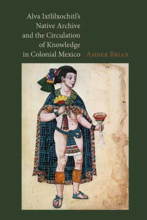
Born between 1568 and 1580, Alva Ixtlilxochitl was a direct descendant of Ixtlilxochitl I and Ixtlilxochitl II, who had been rulers of Texcoco, one of the major city-states in pre-Conquest Mesoamerica. After a distinguished education and introduction into the life of the empire of New Spain in Mexico, Ixtlilxochitl was employed by the viceroy to write histories of the indigenous peoples in Mexico. Engaging with this history and delving deep into the resultant archives of this life's work, Amber Brian addresses the question of how knowledge and history came to be crafted in this era.
Brian takes the reader through not only the history of the archives itself, but explores how its inheritors played as crucial a role in shaping this indigenous history as the author. The archive helped inspire an emerging nationalism at a crucial juncture in Latin American history, as Creoles and indigenous peoples appropriated the history to give rise to a belief in Mexican exceptionalism. This belief, ultimately, shaped the modern state and impacted the course of history in the Americas. Without the work of Ixtlilxochitl, that history would look very different today.
Latin American Literature in Transition Pre-1492-1800 by Amber Brian & Rocío Quispe-Agnoli
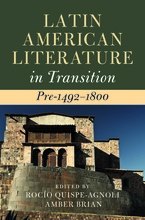
The year 1492 invokes many instances of transition in a variety of ways that intersected, overlapped, and shaped the emergence of Latin America. For the diverse Native inhabitants of the Americas as well as the people of Europe, Africa, and Asia who crossed the Atlantic and Pacific as part of the early-modern global movements, their lived experiences were defined by transitions. The Iberian territories from approximately 1492-1800 extended from what is now the US Southwest to Tierra del Fuego, and from the Iberian coasts to the Philippines and China. Built around six thematic areas that underline key processes that shaped the colonial period and its legacies - space, body, belief systems, literacies, languages, and identities - this innovative volume goes beyond the traditional European understanding of the lettered canon. It examines a range of texts including books published in Europe and the New World and manuscripts stored in repositories around the globe that represent poetry, prose, judicial proceedings, sermons, letters, grammars, and dictionaries.
Entorno empresarial: libro del alumno - nueva edición by Marisa de Prada Segovia, Pilar Marcé Álvarez, Montserrat Bovet
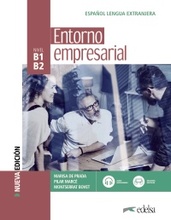
Es un manual de dirigido a aquellos estudiantes con un nivel de español B que desean aprender el lenguaje relacionado con el mundo de la empresa, las operaciones comerciales, bursátiles, bancarias y la economía en el mundo hispano; Conocer todo lo relacionado con el mundo de las negociaciones tanto en España como en Hispanoamérica; saber cuál es la clave del éxito de las empresas españolas e hispanas más importantes.
Enmarcado en la línea de Entorno Laboral, la nueva edición de Entorno Empresarial presenta las siguientes novedades:
1. Índice de contenidos detallado en una doble página.
2. 12 unidades temáticas con una nueva estructura modular y sistemática que permiten el trabajo independiente.
3. Nueva doble página de entrada con los principales contenidos léxicos, gramaticales y funcionales del tema.
4. Actualización de textos, fechas y datos.
5. Inclusión de contenidos gramaticales propios del nivel.
6. Actividades específicas diriginas a la expresión oral.
7. Presentación de casos prácticos de empresa para debatir en clase.
Entorno laboral: libro del alumno - nueva edición by Marisa de Prada Segovia, Pilar Marcé Álvarez, Montserrat Bovet
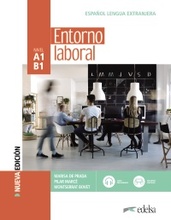
Manual de Español Lengua Extranjera enfocado al mundo laboral.
Abarca, en un solo volumen, los principales contenidos desde el nivel A1 hasta el B1.
Edición nueva y ampliada
Guía para la clase de español con fines específicos: ciencias sociales y jurídicas. Vol. III by Natalia Alarcón Mosquera, Et al
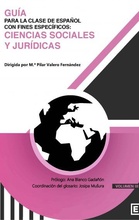
El tercer volumen de la colección se dirige a profesores de español con fines específicos (EFE) interesados en la docencia de español para profesionales de las ciencias sociales y jurídicas. Se concibe como un manual de trabajo y de referencia rápida para la consulta de información básica sobre nueve lenguas de especialidad: Español de las ciencias políticas, Español del deporte, Español de los negocios, Español de la pedagogía, Español del periodismo, Español de la publicidad, Español de Recursos Humanos, Español del turismo y Español de las ciencias jurídicas.
Por tanto, el volumen III, de autoría colectiva, consta de 9 capítulos y, en cada uno de ellos, encontramos los siguientes apartados:
Introducción: se presentan el ámbito de trabajo, el grupo de profesionales que usan la lengua de especialidad y las principales situaciones comunicativas en las que está presente, así como los rasgos generales de su discurso.
History of the Chichimeca Nation: Don Fernando de Alva Ixtlilxochitl's Seventeenth-Century Chronicle of Ancient Mexico Edited and Translated by Amber Brian, Bradley Benton, Peter B. Villella and Pablo García Loaeza
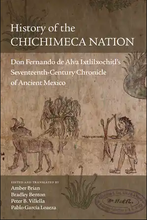
Composed in the first half of the seventeenth century, a hundred years after the arrival of the Spanish conquerors in Mexico, the History of the Chichimeca Nation is based on native accounts but written in the medieval chronicle style. It is a gripping tale of adventure, romance, seduction, betrayal, war, heroism, misfortune, and tragedy. Written at a time when colonization and depopulation were devastating indigenous communities, its vivid descriptions of the cultural sophistication, courtly politics, and imperial grandeur of the Nahua world explicitly challenged European portrayals of native Mexico as a place of savagery and ignorance. Unpublished for centuries, it nonetheless became an important source for many of our most beloved and iconic memories of the Nahuas, widely consulted by scholars of Spanish American history, politics, literature, anthropology, and art.
The manuscript of the History, lost in the 1820s, was only rediscovered in the 1980s. This volume is not only the first-ever English translation, but also the first edition in any language derived entirely from the original manuscript. Expertly rendered, with introduction and notes outlining the author’s historiographical legacy, this translation at long last affords readers the opportunity to absorb the history of one of the Americas’ greatest indigenous civilizations as told by one of its descendants.
Despertarse de Europa: Arte, literatura, euroescepticismo by Luis Martín-Estudillo
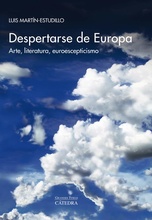
Despertarse de Europa: Arte, literatura, euroescepticismo
by Luis Martín-Estudillo
Europa y el proyecto de su integración han sido el motor de transformaciones políticas y sociales beneficiosas al mismo tiempo que resultaban la coartada perfecta para otras fuertemente cuestionadas. Desde hace más de un siglo, ese ideal y sus realizaciones han generado sueños y pesadillas, respuestas racionales y afectivas tanto a favor como en contra. Su ambigüedad sigue provocando controversias también en ámbitos ajenos a la esfera institucional. Mediante el estudio riguroso de un variado corpus cultural (ensayo, televisión, fotografía, poesía, novela, "performance", teatro) este libro presenta una historia de las resistencias españolas a una idea que ha emocionado, frustrado, alarmado e inspirado a intelectuales y artistas tan distintos como María Zambrano o Santiago Sierra.
Hacia una sociolingüística crítica: desarrollos y debates Co-Edited by Mercedes Niño-Murcia, Virginia Zavala, and Susana de los Heros
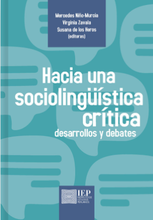
Currently, new and exciting developments are shaking research on language. In the 1960s and the 1970s a new paradigm substantially changed the focus on language research from a mental perspective (generativism) to take language as social and cultural interactions. Those were the times when sociolinguistics appeared as a subfield of linguistics, led by scholars like William Labov, Dell Hymes, Joshua Fishman, and Erving Goffman. 50 years later we are witnessing new developments that have been named by the scholar Mary Bucholtz as Sociocultural linguistics. In order to disseminate decisive work, we present translations into Spanish of pieces by Mary Bucholtz, Kira Hall, Monica Heller, Gunther Kress, Jonathan Rosa and Nelson Flores who are spearheading a change. The theoretical work of these researchers will have consequences for other disciplines and will put language research into a different light. In addition, we have included new Latin American and USA researches whose work illustrate the new paradigm of sociocultural linguistics (Virginia Unamuno, Ana Cristina Ostermann and Anne Marie Guerrettaz).
Spanish Grammar Companion for Teachers: Linguistic Insights for Deeper Understanding by Philip Klein
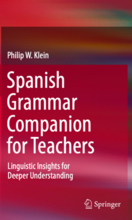
This textbook boosts the confidence of persons teaching Spanish as a second language, who may lack confidence in their understanding of certain tricky areas of expression. Their previous training has not enabled them to control (much less explain to others) the several “danger zones” which challenge many in-service teachers, graduate students serving as teaching assistants and others who use Spanish professionally. It offers original and insightful analyses, abundant examples and helpful English comparisons. It disarticulates the machinery of grammar into manageable parts.
It is not intended for those beginning to learn Spanish (since it skips the basics to focus on the “rough spots”), but for those who know Spanish well, yet need to overcome their nagging limitations in obtuse areas, e.g. subjunctive, reflexives, pronouns (neuter, relative, personal), adjective placement, ser/estar, preterite/imperfect, commands, gender, passive and impersonal expressions. There are sections devoted to words easily confused with each other, use of the accent mark, irregular verbs, and sentence structure.
This work is optimal for self-study and to supplement course texts in composition, culture and linguistics. It benefits native-speaker teachers unfamiliar with the “why” of their language. It benefits native-speaker teachers unfamiliar with the “why” of their language, as well as buttressing anglophone instructors of scant linguistic background. The result is a better prepared teacher and a more promising learning experience for the students.
The Rise of Euroskepticism by Luis Martín-Estudillo
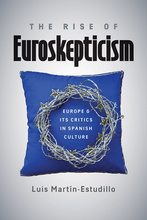
Covering from 1915 to the present, this book deals with the role that artists and intellectuals have played regarding projects of European integration. Consciously or not, they partake of a tradition of Euroskepticism. Because Euroskepticism is often associated with the discourse of political elites, its literary and artistic expressions have gone largely unnoticed. This book addresses that gap.